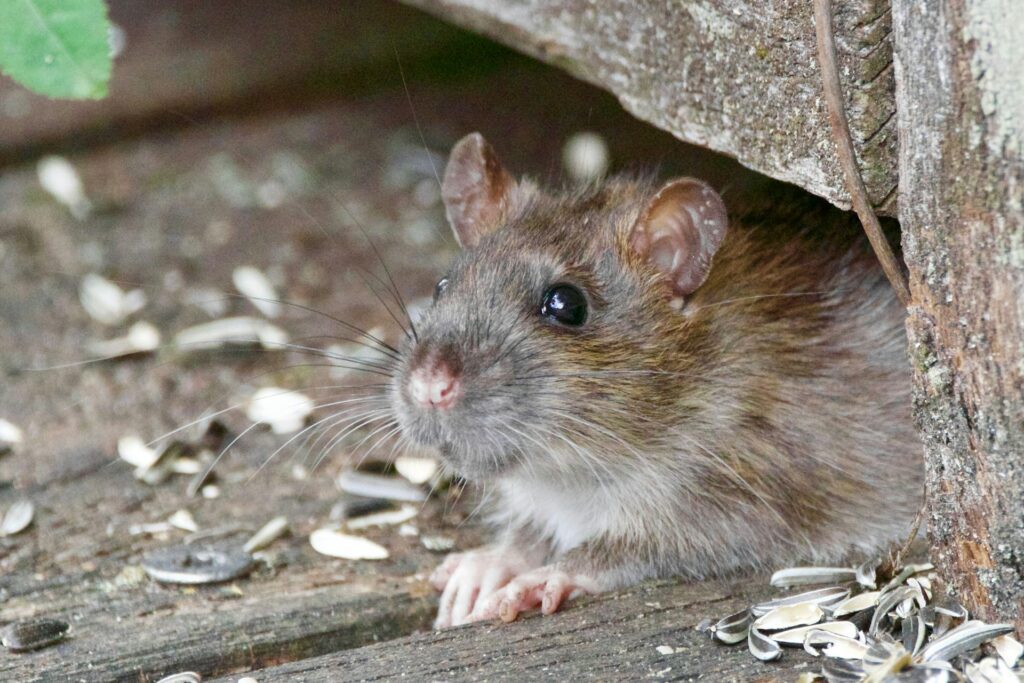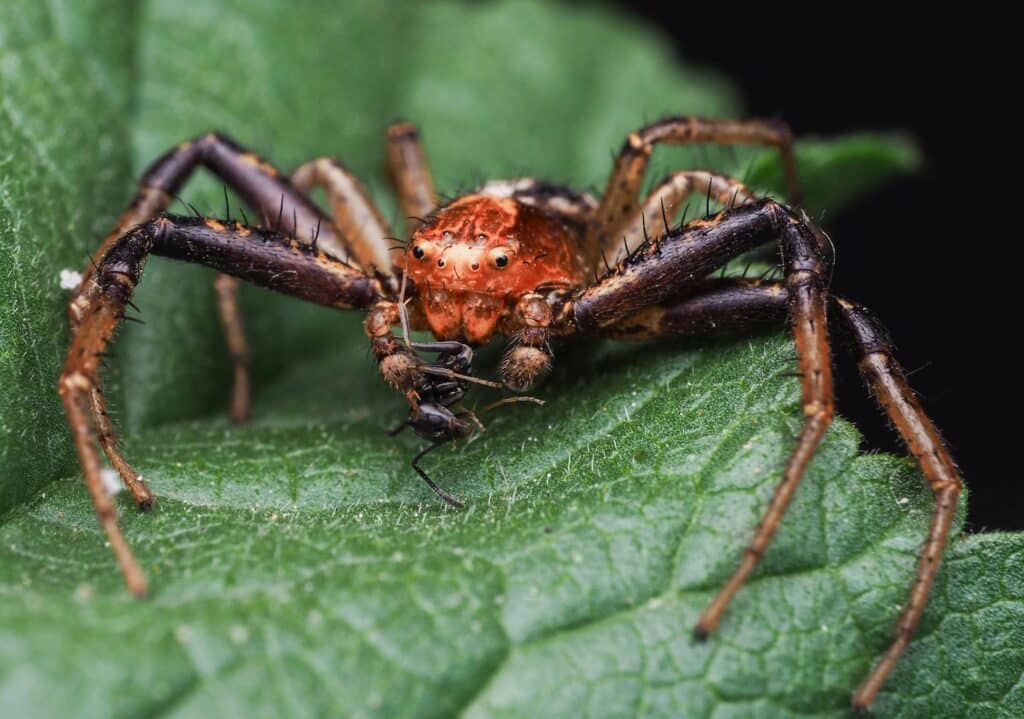Silverfish are common household pests that can be found in dark and damp areas of your home, such as basements, attics, and bathrooms. They are named after their silvery, metallic appearance and fish-like movements. These insects have a three-stage life cycle: egg, nymph, and adult. Nymphs resemble adults but are smaller and lighter in color. Silverfish can live up to eight years.
What are silverfish?
Silverfish are small wingless insects that belong to the order Zygentoma. They are commonly found in homes throughout North America and other parts of the world. These insects prefer dark, damp environments with high humidity levels.
Being nocturnal, these insects are most active at night and they feed on carbohydrates such as sugars and starches. They can often be found feeding on books, paper products, clothing, and wallpaper paste. These pests can cause damage to these items by consuming them or leaving behind yellow stains.
If you suspect you have a silverfish infestation in your home, there are several steps you can take to eliminate them.
Identifying Signs of a Silverfish Infestation
Look for Silverfish in Moist Areas of Your Home
Silverfish are attracted to moist areas, so you may find them in your bathroom, basement, or kitchen. If you suspect that you have a silverfish infestation, the first thing to do is look for them in these areas.
Adult Silverfish Are Around 1/2 to 3/4 Inches Long
Silverfish are small insects that grow up to about 1/2 to 3/4 inches long. They have a distinctive appearance with long antennae and three tail-like appendages at the back of their bodies. They are gray or silver in color and move quickly.
Silverfish Have a Distinct Musty Smell
Another way to identify a silverfish infestation is by the musty smell they emit. This odor is caused by pheromones that male silverfish release to attract females for mating. If you notice this smell in your home, it’s likely that you have a silverfish infestation.
Check for Silverfish in Areas with Paper or Cardboard
As mentioned, silverfish feed on paper products and cardboard. Therefore it’s important to check these areas if you suspect an infestation. Look for any signs of damage such as holes or yellow stains on books or wallpaper.
Understanding Silverfish Behavior and What Attracts Them
Feeding on Starchy Materials
Silverfish are particularly fond of cellulose that provides them with nourishment. They can consume synthetic fabrics like rayon or nylon because they contain starches.
Surviving Without Food
Silverfish can survive for several months without food. This is because they have a slow metabolism rate that allows them to conserve energy when there is no food available. However, they need water to survive; hence they require moist environments.
Nocturnal Creatures
Silverfish are nocturnal creatures and are most active at night when humans are asleep. They prefer dark places where they can hide during the day; this includes cracks in walls or floors or behind baseboards or moldings.
Laying Eggs
Female silverfish can lay up to 50 eggs at a time in crevices or cracks. These eggs hatch within weeks into nymphs that resemble adult silverfish but smaller in size.
Why Are Silverfish in your Home?
Silverfish come into homes looking for food and shelter. They are attracted to moisture, starchy materials, and dark hiding places. Once they find a suitable environment, they will lay their eggs and reproduce.
What Do Silverfish Do?
Silverfish are not harmful to humans; they do not bite or carry diseases. However, they can cause damage to personal belongings like books, clothing, wallpaper, and other household items made of cellulose-containing materials. Their presence can be an indication of excessive moisture levels in your home that can lead to mold growth.
Signs of a Silverfish Infestation: Prevention and Control
Distinctive Appearance
Silverfish are small, wingless insects that are typically silver-grey in color. They have long antennae and three bristles on their rear end. These insects prefer to live in dark, damp areas such as basements, attics, and bathrooms. They can be found in homes all year round but tend to be more prevalent during the summer months when the humidity is higher.
Damage to Property
One of the most common signs of a silverfish infestation is damage to books, wallpaper, and clothing. They will eat through these materials leaving behind small holes or yellow stains. In addition to causing damage to property, silverfish can also contaminate food products.
Prevention Methods
Keeping your home clean and clutter-free can also help reduce the likelihood of a silverfish infestation.
Control Methods
If you already have a silverfish infestation, there are several control methods you can use to treat them. Insecticides specifically designed for silverfish can be used but should always be used with caution as they can be harmful if not used correctly. Traps can also be effective at capturing these insects although they may not completely eliminate an infestation.
Contacting pest control experts is often the smartest and most effective means of addressing your silverfish issue and preventing it from progressing.
Prevention Tips for Avoiding Future Silverfish Infestations
Seal Cracks and Gaps in Walls, Baseboards, and Other Areas to Prevent Silverfish from Entering Your Home
Preventing silverfish infestations is much easier than getting rid of them once they have taken over your home. One of the most effective ways to prevent silverfish from entering your home is by sealing cracks and gaps in walls, baseboards, and other areas. Silverfish can enter your home through tiny openings that you may not even notice. Therefore, it’s essential to inspect your home regularly for any potential entry points.
The first step in preventing a silverfish infestation is to seal all cracks and gaps in walls, baseboards, and other areas using caulk or weatherstripping. This will help prevent these pests from entering your home. Make sure that all windows and doors are properly sealed with weatherstripping or door sweeps.
Another way to prevent silverfish from entering your home is by installing screens on all vents and openings leading outside. This will also help keep other pests out of your home while allowing fresh air to circulate inside.
Keep Your Home Clean and Free of Clutter to Eliminate Potential Hiding Spots for Silverfish
Regularly vacuuming carpets, rugs, upholstery, and floors can help eliminate any food crumbs or dead insects that may attract silverfish.
It’s also important to keep stored items off the ground as much as possible since this is where silverfish tend to congregate. Use plastic storage containers with tight-fitting lids instead of cardboard boxes when storing clothes or other items in basements or attics.
If you’ve ever found a silverfish in your bed, it’s likely due to their search for moisture and food sources which can be found in bedroom environments, especially if there are paper products or linen. To address this unsettling scenario, consider the strategic use of borax, which proves to be an effective deterrent against these pests. Borax not only kills silverfish but also interferes with their life cycle, making your bedroom less hospitable to them. Additionally, regularly cleaning and reducing humidity in your bedroom can help prevent their return, ensuring a more peaceful and pest-free sleeping area.
Store Food Items in Airtight Containers and Keep Them off the Ground to Avoid Attracting Silverfish
Make sure that all pantry shelves are clean and free of any spilled food or crumbs. Regularly wipe down shelves with a damp cloth to remove any dust or debris that may attract silverfish. Make sure that all pet food is stored in sealed containers and not left out overnight.
Methods for Getting Rid of Silverfish, Including Natural and Professional Pest Control
Silverfish are pesky little creatures that can wreak havoc on your home. They are attracted to damp areas, such as laundry rooms and basements, and feed on starches and sugars found in paper products, clothing, and other household items. Fortunately, there are many natural and professional methods for getting rid of silverfish.
Diatomaceous Earth
One of the most effective natural methods for pest control is diatomaceous earth. This fine powder is made from fossilized algae and works by dehydrating the silverfish’s exoskeleton. Simply sprinkle it around areas where you have seen silverfish activity, such as baseboards or under sinks. Be sure to wear a mask when using diatomaceous earth, as it can be harmful if inhaled.
Silica Gel
Another natural method for getting rid of silverfish is silica gel. This substance works by absorbing moisture from the air, which can dehydrate the silverfish and prevent them from reproducing. Silica gel packets can be purchased online or at hardware stores, or you can make your own by filling small cloth bags with silica gel beads.
Boric Acid
Boric acid is another effective natural method for pest control. It works by disrupting the silverfish’s digestive system when ingested. To use boric acid to get rid of silverfish, mix it with sugar or flour to attract them to the bait.
Salt
Salt is another common household item that can be used to get rid of silverfish naturally. Sprinkle salt around areas where you have seen silverfish activity or mix it with warm water to create a spray that you can use on surfaces.
Essential Oils
Many essential oils have insecticidal properties that can repel or kill silverfish. Peppermint oil is particularly effective at repelling these pests due to its strong scent. Other essential oils that may work include lavender, cedarwood, and tea tree oil. To use essential oils for pest control, mix a few drops with water in a spray bottle and apply to areas where you have seen silverfish activity.
Japanese Cedar
Japanese cedar is a natural repellent for silverfish and can be used to protect household items from infestation. Simply place small pieces of cedar in drawers or storage containers to keep silverfish away.
Soap Residues
Believe it or not, soap residues on laundry room floors can attract silverfish. To prevent infestations, keep these areas clean by wiping them down regularly with a damp cloth.
Professional Pest Control
If natural methods are not effective at getting rid of your silverfish problem, you may need to call in the professionals. Professional pest control methods may include the use of food products that are toxic to silverfish species such as zygentoma. These products work by disrupting the insect’s nervous system and can be sprayed or applied as bait.
Conclusion: Taking Action Against Silverfish Infestations
Now that you have a better understanding of silverfish, their behavior, and how to identify signs of an infestation, it’s time to take action. Prevention is key and there are several steps you can take to avoid future infestations.
First and foremost, keep your home clean and dry. Silverfish are attracted to moisture and humidity, so eliminating excess water sources will help prevent them from taking up residence in your home. Fix any leaky pipes or faucets, use a dehumidifier in damp areas like basements or bathrooms, and always wipe down surfaces after showering or cooking.
Start with reducing the humidity levels in your home by using dehumidifiers or fans in damp areas like basements or bathrooms. Seal any cracks or crevices around doors and windows where these pests may enter your home.
Remove any sources of food for silverfish by storing food items properly in sealed containers. Vacuum regularly to remove any eggs or nymphs that may be hiding in carpets or furniture. This includes gaps around windows and doors, as well as holes in walls or floors. Use caulk or weatherstripping to seal these areas off.
Remember that prevention is always easier than cure you can avoid the headache of dealing with a silverfish infestation altogether.










